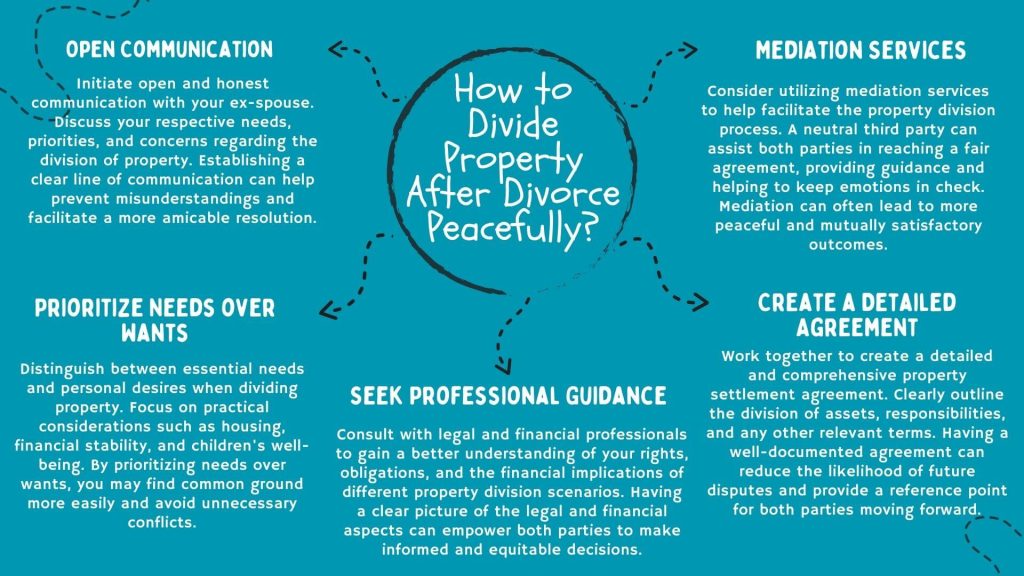Divorce in Minnesota is governed by state-specific laws that outline the procedures and requirements for ending a marriage, such as Minn. Stat. Ch. 518, MN Court Rules of Civil Procedure, and MN General Rules of Practice in District Court.
Table of Contents
ToggleIn the state, divorce is legally referred to as a dissolution of marriage. It is the formal termination of a marital union between spouses, which involves preparing a Petition for Dissolution of Marriage and other necessary documents, serving the other party, filing papers with the court, attending a settlement conference or mediation, if necessary, and obtaining a final divorce decree. This guide will address common questions and key concerns couples may have when considering a divorce in Minnesota.
Is Minnesota a No-Fault Divorce State?
Minnesota is a no-fault divorce state. It means that during a Minnesota no-fault divorce, there’s no need for a petitioner to prove wrongdoing by the other spouse as the cause for the marriage ending. It’s sufficient for just one party to declare that the marriage has irreparably broken down. Let’s focus on the possible grounds for divorce in more detail.
The Grounds for Divorce in Minnesota
A divorce in Minnesota can be granted if there has been an irretrievable breakdown of the marriage, signifying that it is beyond repair. Since the state courts follow a “no-fault divorce” model, spouses cannot currently apply for a fault divorce in Minnesota.
No-Fault Grounds
The only official ground for divorce acceptable in the state is the irretrievable marriage breakdown. In the case of no-fault divorce, couples seek to dissolve their marital union without assigning blame or establishing wrongdoing of either party. Instead, they need to affirm that their marriage has experienced an irretrievable breakdown and there is no possibility of reconciliation.
This approach to divorce allows a more amicable dissolution, given spouses are in agreement. Uncontested divorce in Minnesota is a process where both spouses agree on all key issues, such as property division, child custody, and support, and do not require court intervention to resolve these matters.
Fault-Based Grounds

At present, it is not possible to initiate divorce proceedings due to fault-based grounds within the state. In at-fault divorces, one party alleges specific misconduct or wrongdoing as the reason for seeking a marriage dissolution. It demands evidence of issues like cruelty, adultery, or abandonment. Fault-based divorces are usually more contentious.
In Minnesota, the only reason for divorce spouses can currently indicate in their petition, without blaming each other, is irretrievable marriage breakdown.
Minnesota Residency Requirements for Divorce
Minnesota’s residency requirements for divorce stipulate that at least one spouse must have lived in the state for a minimum of 180 days to be able to initiate the process. Alternatively, if one of them is a member of the armed forces and maintains Minnesota residency for at least 6 months, they can also file for divorce in the state. The purpose of these requirements is to ensure that the case falls under Minnesota jurisdiction.
How to File for Divorce in Minnesota

The process of getting a divorce in MN without a lawyer requires following a few simple steps, given your case is uncontested:
- Finding the necessary forms for getting a divorce in MN and filling them out. Review each document carefully to ensure accuracy since mistakes in the forms can lead to court rejection. It’s important to sign and date the papers. Some of them, like the Petition for Dissolution of Marriage, require your signature under the penalty of perjury, meaning you’re confirming the truth of the information provided. It’s necessary to make several copies of the documents.
- Serving the copies of papers to your spouse and getting a proof of service. If both parties are in agreement, the Minnesota divorce process permits the Waiver of Service; the responding party has to sign the respective form confirming a petitioner may not deliver divorce documents.
In case there are disputes between you and your spouse, you should ask someone of at least 18 years old, like a friend, private process server, or a sheriff, to personally deliver the Summons and the Petition. MN divorce laws state that it’s important to hand these forms directly to the respondent and not send them by mail or leave them with someone at their residence.
If you are unable to locate your spouse or if they are deliberately avoiding personal service, you can obtain permission from a court to serve your spouse by alternate means, such as publishing a notice in a local newspaper. - Filing the divorce papers and paying the court fees. Depending on the case, you can file the initial divorce papers directly after serving or wait 30 days for a spouse’s reply. When submitting the papers, you must cover the filing fees or ask the court for a fee waiver.
- Attending court hearings, if necessary, and getting your divorce finalized. Various aspects of the divorce settlement, such as property division, child custody, and spousal support, may be discussed during the hearings. After reviewing the Petition and other related paperwork, the judge will sign the Divorce Decree, which is an official document confirming the divorce is granted.
What Is the First Step in Divorce in MN?
The first step in a divorce in Minnesota is to obtain and complete the necessary MN divorce forms. The initial set of papers typically includes the Summons and Petition for Dissolution of Marriage, which are the formal documents to start the divorce process. In the Petition, it is necessary to provide detailed information about spouses, such as personal details, data on income, debts, and property, children involved, if any, etc.
The set of other forms to prepare in your particular case will depend on two key factors:
- If both spouses are in agreement and jointly seeking a divorce.
- Whether parties have minor children together or if one spouse has given birth to a child from a different relationship during the marriage.
The forms you may require are Confidential Information, Cover Sheet for Non-Public Documents, Certificate of Representation and Parties, etc. You can prepare these documents yourself or contact a lawyer for help; however, remember that their services will not be cheap.
If your case is uncontested, the most advantageous solution when dealing with paperwork would be to order divorce papers from a reliable service online and receive ready-made forms for your case within a few days.

Where to File Your Divorce Case?
After serving the forms to your spouse, you should file the documents with the district court in the county where either you or your spouse currently reside. You can also send the papers by mail to the court administrator. Filing your divorce case online using the eFS System is also possible; however, check in advance if this option is available in your county.
The Filing Fees for Divorce in MN

The cost of initiating a divorce includes a $365 fee, comprising a base fee of $315 and an additional fee of $50, which may be subject to extra county-specific charges. Additionally, divorce court expenses may consist of a $75 fee for filing a motion or responding to one and a $10 fee for forms packets.
If you have a low income and cannot cover the costs, you can request a waiver of these fees from the judge using the Affidavit to Proceed In Forma Pauperis.
How Much Does a Divorce Cost in MN?
An uncontested divorce can cost from $500 to $3,000 or more, while expenses on a contested one can easily reach $20,000.
The cost of divorce in MN can vary widely. While basic costs typically include a $365 filing fee, additional expenses arise from legal representation, mediation, or court-related services like filing motions, each incurring separate fees.
A contested divorce will always be more expensive, with average costs of $10,000 to $20,000, because it requires the participation of an attorney and other experts who will help spouses decide on disputable issues. The involvement of professional appraisers, for example, is necessary to determine how to fairly divide assets. If there are children in the case, spouses may be required to hire child custody experts, adding to overall divorce costs.
How Long Does a Divorce Take in MN?
The timeline for obtaining a divorce in Minnesota can range from several months in uncontested cases to two years in highly contested ones. The duration may vary based on:
- the specific court procedures in the county,
- the workload of local courts,
- the level of agreement between spouses regarding divorce-related issues,
- the specific circumstances of your case,
- number of hearings required, etc.
In general, an uncontested divorce with an agreement in place may take as little as a few months to finalize. However, contested cases involving disputes over issues like property division or child custody can extend the process to a year or more.
Is Minnesota a Community Property State?

Minnesota is not a community property state; instead, it follows the principles of equitable distribution. In a community property state, marital assets and debts are typically divided equally between spouses upon divorce. In Minnesota, however, the court aims to distribute marital property and debts fairly but not necessarily equally. This means that the judge will consider various factors when dividing assets, such as each spouse’s contributions to the marriage, their needs, financial situation, etc., resulting in a more flexible and balanced approach to property distribution.
How to Split up Assets During a Divorce in MN?
According to Minnesota marital property laws, the state follows an equitable distribution rule, which means assets are divided fairly but not always equally. To split assets, spouses should first create a comprehensive list of marital property, including real estate, finances, and personal belongings. Then, they may negotiate and reach agreements on the division. If they can’t agree, the court steps in to make a decision. During the asset division process, judges consider several crucial factors, including but not limited to:
- the duration of the marriage,
- the age and health of each spouse,
- their income sources,
- vocational skills and future employability,
- contributions made by a spouse to the marriage.
Asset division encompasses splitting financial holdings like bank accounts, stocks, IRAs, and 401Ks. These financial assets are subject to equitable distribution as tangible properties during divorce proceedings. In complex divorce cases with many assets to distribute, it’s common for spouses to hire professional experts to accurately assess the value of property owned.
How to Divide Property After Divorce?

It’s imperative to distinguish between marital property and separate property. Marital property encompasses assets acquired during the marriage, while separate property consists of assets obtained individually, often before the marriage. Gifts and inheritances of either spouse are also categorized as individual property, which is typically not divided during a divorce.
Real estate often represents the most significant asset subject to distribution during a divorce. In Minnesota, there are various options for the division of the family home or other real estate:
- Selling the property. Divorcing couples often sell the family home and divide the proceeds equally.
- Buyout. One spouse can buy out the other party’s share of the property and become the sole owner.
- Co-ownership. In some instances, former spouses may continue to co-own the property after divorce, especially if it’s in the best interest of their children.
- Deferred sale. In situations where selling the property immediately isn’t practical, the court may order a deferred sale, allowing one spouse to continue living in the home for a specified period before it is sold and the proceeds divided.
How to Manage Child Support and Alimony Under Minnesota Divorce Laws?
To manage child support and alimony issues under Minnesota divorce laws, the court typically considers both parties’ financial status and other case-specific details.
When it comes to alimony in Minnesota, or spousal support, it’s decided based on factors like:
- Marriage duration.
- Earning potential of both spouses.
- Age and health of each spouse.
- Current debts and assets.
- Child custody arrangements, especially whether the primary caregiver can work while tending to the children.
Spousal support in Minnesota may be either a permanent arrangement or have a predetermined time limit set by a judge. Additionally, either spouse can seek a modification if substantial changes in circumstances arise, such as job loss or health issues, warranting an adjustment in the spousal support arrangement.
Child support in Minnesota is determined using state-specific guidelines, and it’s often collected by deducting the amount directly from the paying parent’s wages. It is calculated based on parents’ income, number of children, healthcare costs, parenting time, extraordinary expenses, etc.
Child support amounts can be modified if there are any changes in custody, either parent’s financial circumstances, or the children’s needs, ensuring the support arrangement remains appropriate and fair for all parties involved.
How Does Adultery Affect Divorce in MN?
Under Minnesota divorce laws, adultery doesn’t significantly impact divorce proceedings, as it is a no-fault state. Since adultery is not a legally recognized ground for divorce, the court typically doesn’t consider it when determining issues like property division, spousal support, or child custody. It is possible, though, that adultery can impact the distribution of assets in a Minnesota divorce when it can be proven that the spouse engaged in infidelity used marital funds to support their extramarital relationship.


Teresa Miller is a true luminary in the realm of family law. The expertise of this celebrated author and legal scholar extends to her insightful writings, which have become an indispensable resource for both legal practitioners and families in need. Her passion for the field of family law is as enduring as her commitment to justice. Miller’s profound knowledge and dedication have made her a respected authority, and her writings are a must-have in numerous professional and personal libraries.



